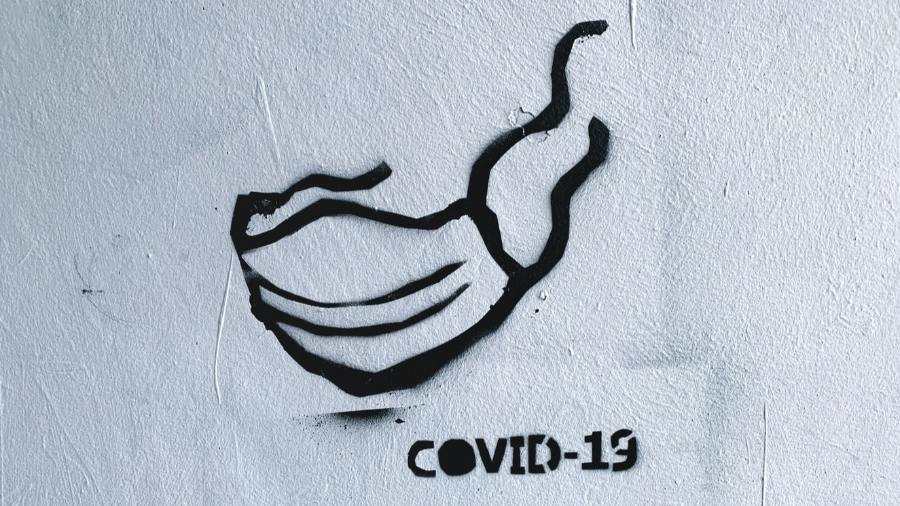Scapegoating: Are Christians to Blame for COVID-19?

“GO HOME FLAT LANDERS ViRUS”
I stared at the cardboard note stapled to the state forest signpost in the Cascade Mountains, where my sons and I were about to head uphill.
“Flatlander?” I thought. “I grew up in the mountains! And hiking is a responsible way to practice social distancing and get clean air!”
Up until then, in my experience most people had seemed pretty kind during this present crisis. This sign was the first exposure I had off-line and off-the-air to group antagonisms arising from fear.
Did the author of this “go home” sign imagine that a sick Seattle hiker’s cough might send the virus wafting miles downhill, through the window of his pickup truck and into his lungs, like the demonic particles in The Green Mile?
Crises tend to bring out anger, and anger needs someone to fix upon. If there’s no obvious target, then someone needs to be made a scapegoat.
In the media, lots of people seem angry right now. Conservatives are understandably mad at the Chinese government. Rumor-mongers in China suggested that American soldiers may have planted COVID-19 in Wuhan. Donald Trump called it “the China (or “Chinese”) virus.”
Blaming Evangelicals?
The New York Times ran an article warning that thanks to Trump, racist attacks on East Asians are on the upswing, and castigating anyone so debased as to blame a broad group of people for such a horror. Then a few days later, editors at America’s “paper of record” changed their minds about hate-mongering and ran an article roundly blaming conservative Christians for the disease, announcing that “the road to hell was paved by Evangelicals.”
This latter article, by Catherine Stewart, was probably the nastiest and most irrational argument I have seen from an American source in the wake of the pandemic. Like rumor-mongers in the Middle Ages who blamed Jews for poisoning the wells during the plague, Stewart cherry-picked a few circumstantial bits of evidence to accuse tens of millions of Christians of bringing doom on all of us.
If there’s no obvious target, then someone needs to be made a scapegoat.
She smeared cabinet officials who happened to be Christians, whether evangelical or not, with any brush that came to hand. She even brought up a racist theologian from the Old South 160 years ago, to slander modern Christians. (Though Christianity inspired the abolitionist movement.)
While offering no believable evidence that Christians could be responsible for a pandemic that began in Communist China and first spread to liberal cities, she attempted to whip up anger at people who, in New York City, would constitute a minority. (While others accuse Samaritan’s Purse of vile crimes for setting up a field hospital in Central Park.)
Scapegoating’s Long History
“It was the woman’s fault!” “It was the snake’s fault!”
From the beginning, the Bible warns us that when under pressures, people tend to point fingers. Finger-pointing often morphs into lynch mobs.
Jesus was not crucified on a lazy sunny softball afternoon when all seemed right with the world. Roman legions had conquered Israel, and its Jewish population was restive under the iron thumb of the emperor’s Cruella Deville legions. Revolution and assassination had become increasingly popular past-times, and both sides were on edge. Then the urban proletariat, “media elite” and imperial Powers That Be joined hands to crucify a preacher who told his followers, “Love your enemies.”
Witch-Hunting
French literary anthropologist Rene Girard noted that stressed communities usually pick on people who stand apart in some way. The penniless. The filthy rich. The crooked-nosed. Those who speak with an accent. Crones on the edge of town. Stars with the faces of gods. Even nobility, knowledge (Plato warned), or divine kindness, can spark pent-up rage from the mob, which can find threat even in virtue.
Rodney Stark notes that persecution of the Jews broke out in Europe and in Muslim countries during times of social stress. Witch-hunting also occurred on the margins of state and church power, in settlements along the Rhine, for example, or in endangered Puritan colonies on the edge of the North American wilderness.
Fear stokes rumors, some of which turn out to be true. People are dying in Lombardy and Barcelona. The Navy hospital ship Comfort sails past the familiar skyline of Manhattan (already altered by past disasters and a fixture of almost every alien invasion in the movies) and docks to receive patients.
The Stranger as Scapegoat
As the singer Randy Stonehill put it:
The crowd was getting louder circling the stranger
They’re acting like the freak show was in town
Some think he’s a loser
Some think he’s a dreamer
But either way they don’t want him around
And so it was on a shadowy spring day like today (“April is the cruelest month” said T. S. Eliot) that Jesus came and died.
Girard argues that the scapegoat, having been put to death or banished, supposedly brings peace to a community. Later locals may come to recognize they have been visited by the divine. Stonehill recognized this, too:
And I know
He was one of the dying bred
He was one of the chosen few
Bound for the other side
Girard maintains, however, that Jesus subverted this common scapegoating narrative. Yes, Jesus came to make peace between hostile communities. But the gospels reveal the tendentious nature of our lies, nailing all human self-righteousness to the cross. We stand exposed, with the man on the hill, who “carried our sorrows.” Jesus had no sin. But ours is high and lifted up, for all to see, by the crucifixion of the Son of God.
Who is to blame for COVID-19? Flatlanders? Donald Trump? Nancy Pelosi? Wily government agents from Washington or Beijing? Evangelical Christians? God Almighty?
Jesus, God’s Scapegoat
Perhaps the New York Times comes closest, after all.
The instinct to nail Jesus, or his followers, to the cross, may not be reasonable or moral, but it seems to fit the pattern of God’s plan.
The instinct to nail Jesus, or his followers, to the cross, may not be reasonable or moral, but it seems to fit the pattern of God’s plan.
Jesus died to take the pain and sin of the world on himself. The New York Times may be factually incorrect and hypocritical, but they echo what the Bible teaches us to expect from the world, and even from ourselves.
COVID-19 and the forces of hell may celebrate Good Friday with special gloating this year.
Their time is numbered, though. Even if churches are all shut down, even if you wipe the disfiguring cross of Christ off of Central Park, the scapegoat has taken these sorrows upon himself. And Easter is coming.
Dr. David Marshall holds a B.A. in “the Russian and Chinese Languages and Marxism,” an M.A. in Chinese Religions, and a Ph.D. in Christian Thought and Chinese Tradition. His most recent book is Jesus is No Myth: The Fingerprints of God on the Gospels.








